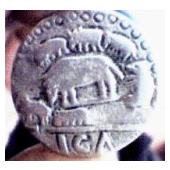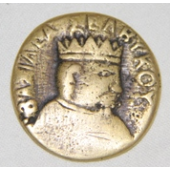Can anyone help me identify this coin?


Can anyone help me identify this coin?


It's a modern or relatively recent fake or fantasy coin, a novelty item of no value.
Useful references
The side with the man in a crown, quite clearly says "Basilea" which means king(even in modern Greek), followed by a name that may say "Selvykou"
The other side has a herd of animals with the letters "ICA"
This is a cast coin, and the Greeks were not casting coins. While this might be a contemporary counterfeit, I don't think it's worth much. This could possibly be a "fantasy coin" instead of a counterfeit, because it doesn't look anything like a real 500BC Greek coin.
but I'm an ancient numismatist, dealer and collector. This coin is definitely not ancient, and definitely not Greek, though the botched legend is in Greek.
It is a fantasy coin. The design is very, very loosely based on ancient coins of the Seleucid Empire, but the "herd of pigs" or "herd of elephants" on the reverse was never used on a genuine ancient coin. There are several different varieties and they have been making them since at least the early 20th century, possible even earlier.
We've seen them several times on the forum before and I've seen a couple on coin dealer scratchtrays here in Australia, so they're certainly not rare
As for the "King Selvyrou" story, I'm assuming the fake coins came first, and the story explaining them came afterwards. That's because, as I said in the other threads, the obverse legend is actually a blundered Seleucid legend: instead of "BASILEWS SELEYKOY"; it now reads something like "BASILEW SELBYKOY".









Images from references in above text
Some observations
By way of contrast, here's a coin from the Seleucid era
Observations: